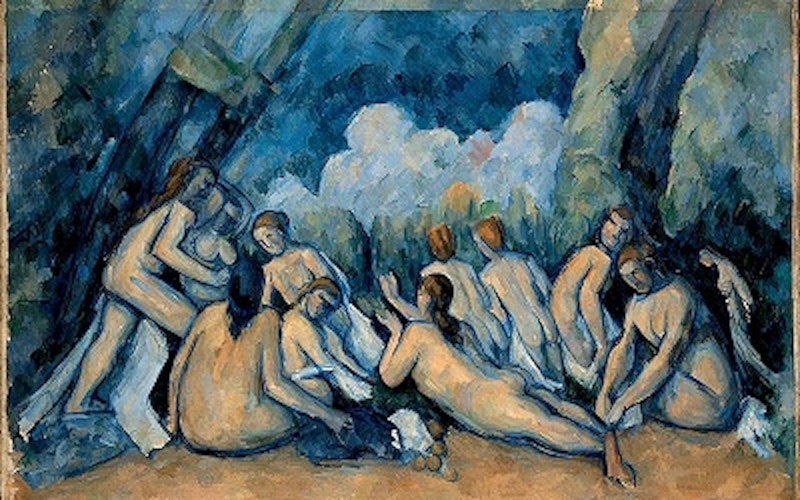
Culture At Large
The creaturely work of Paul Cézanne
Modern art remains a mystery to most of us, and the paintings of Paul Cézanne might be the most perplexing of all. Neither fish nor fowl, they seem to hover somewhere between failed representation and almost, but not quite, abstraction.
And yet, as Alex Danchev’s recent biography Cézanne: A Life reveals, these strange canvases had a tremendous impact on artists during his lifetime and have continued to fascinate artists, writers and philosophers into the present. Henri Matisse, who in 1899 made a significant financial sacrifice to acquire Three Bathers, said that “it has sustained me morally in the critical moments of my venture as an artist …I have drawn from it my faith and my perseverance.”
Cézanne was adamant that painting is an ethical act, requiring a moral attitude. “You have to be incorruptible in your art,” he claimed, “and to be so in your art, you have to train yourself to be so in your life.” What are we to make of such claims for these wobbly paintings, sloping still lifes and clunky landscapes?
Cézanne’s artistic project was simple. Paint nature. It is hard to exaggerate just how radical this is. The entire modern project was driven by a recommitment to nature. When artists began to open their eyes, go out into nature and paint sur le motif, as Cézanne called it, nature became strange and mysterious. Cézanne admitted, “Nature appears to me so complicated.” Every painting for him was a struggle to understand the object before him.
In contrast, the artistic establishment pillaged nature in order to perfect it, using it as a backdrop for classical and Biblical stories that shaped virtue or delighted the soul. Not so for Cézanne. “You don’t paint souls, you paint bodies; and when the bodies are well-painted, dammit, the soul - if they have one - the soul shines through all over the place.”
One of the more important insights of the Reformation was to restore the dignity of the human being as a creature and the world as a gift.
A distinctive feature of Cézanne’s paintings is their heft. He seems to gauge the weight of every subject, whether an apple, oak tree or a chunk of the Mediterranean Sea. And Cézanne himself said, “I paint a head like a door.” This kind of “anarchistic painting,” as Danchev calls it, in which every element in a composition is treated in the same manner, has been threatening to theologians and cultural gatekeepers, who discern in such materiality and physicality a denial of the spiritual and the dignity of the human being as the crown of creation.
Yet Cézanne’s approach to painting invites other interpretations. His practice recovers the inescapable and indescribable mystery and terrible beauty of nature as well as the enchantment of common artifacts.
One of the more important insights of the Reformation was to restore the dignity of the human being as a creature and the world as a gift. If Athanasius claimed that God became man so that man could become god, Luther argued that God became man so that man could once again become a creature, could take delight in his created, contingent, creaturely nature - become a happy human rather than a grumpy god. As Oswald Bayer writes, through Christ “we enter into a new worldliness.”
Perhaps this is Cézanne’s singular achievement. He returned painting to the realm of the creation. These paintings are worldly, creaturely. The critics noticed this. One hostile critic claimed that Cézanne could even paint bad breath. Too often art is regarded as a means to ascend the ladder of divine ascent, to aspire to the heavens and commune with the divine. For Cézanne art is a creaturely practice, one that revels in the givenness of nature.
Perhaps Matisse was right: there is something to the ethical nature of Cézanne’s approach to painting after all.
Topics: Culture At Large, Arts & Leisure, Art